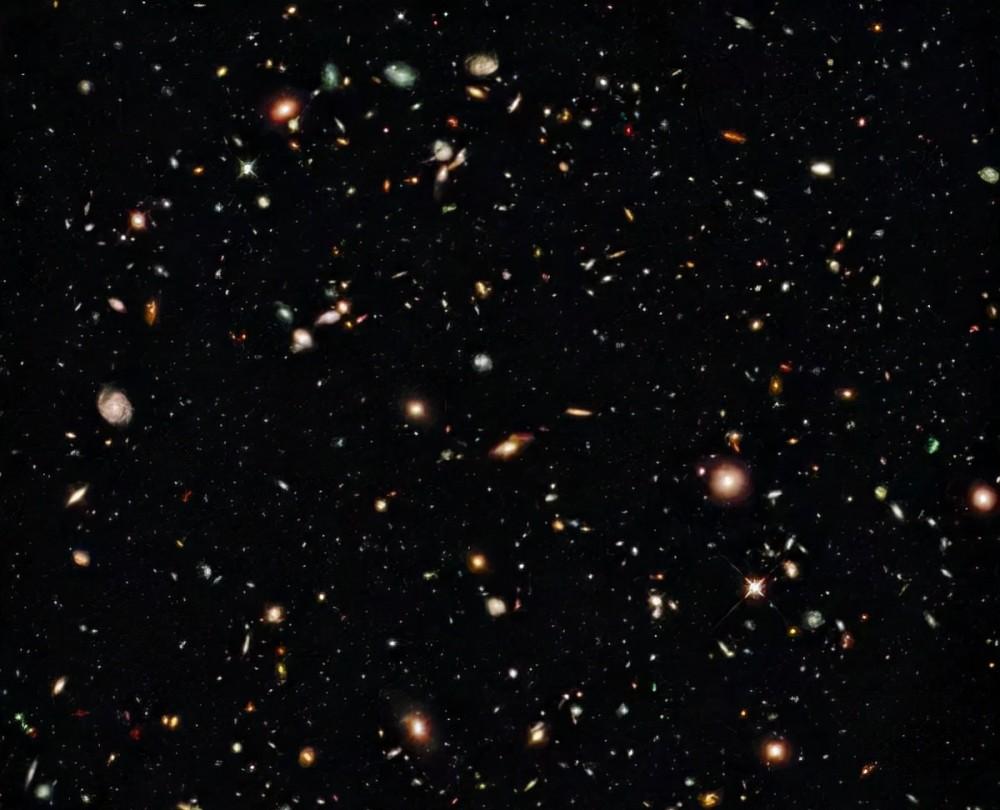Galaxies are a vast celestial system made up of many stars, almost innumerable in the universe.
From September 24, 2003 to January 16, 2004, scientists used the Hubble Space Telescope to photograph a small area of the sky, and after 113 days of exposure, they got a shocking photo of the area of only 12,700,000 parts of the sky, but containing nearly 10,000 galaxies, the farthest distance of 13 billion light years, this photo is the famous Hubble ultra-deep space,

It is not difficult to imagine from this picture how terrifying the number of galaxies in the universe is, and if the total number of galaxies in the universe has at least 2 trillion meanings according to the regional comparison of the whole sky, it also makes us realize that the Milky Way is just a drop in the ocean.
We now know that the Milky Way is actually only a tiny member of the local galaxy group, which is a small group of more than 50 galaxies, of which the closest galaxy to the Milky Way is the Andromeda galaxy located 2.56 million light-years. If you look at Andromeda at night, you will find a faint bright spot, which is the Andromeda Galaxy.
In the early days, people did not know that the dim bright spot was a huge galaxy composed of many stars, but thought it was a large nebula, because under the limitations of technology at that time, only a vague bright spot could be seen, and later in the astronomical community also launched a big debate between the Andromeda galaxy and the universe island or the nebula.
Until 1925, the famous astronomer Edwin Hubble discovered through the largest Hook telescope at the time that there was a Cepheid variable star in the Andromeda galaxy, and finally he used the circumference relationship of this Cepheid variable star to calculate that the Andromeda galaxy was actually very far away from us, and its diameter was larger than the Milky Way.
This means that the Andromeda Galaxy is not an object within the Milky Way, but a separate extragalactic galaxy. Since then, Hubble has also pioneered a new discipline of astronomy called galactic astronomy.
Today, with the continuous advancement of science and technology, we know more and more about the Andromeda galaxy, knowing that it is a large galaxy with a diameter of up to 220,000 light-years, with at least one trillion stars, and has taken the clearest map of the Andromeda galaxy to date through the Hubble telescope.
The picture we see now is the real appearance of the Andromeda galaxy taken by Hubble telescope in 2015
This rectangular marker of a small area is as high as 1.5 billion pixels, its span of about 61,000 light years, the naked eye can distinguish more than 100 million stars. Hubble took more than 400 regions of the Andromeda galaxy, got nearly 3700 images, and then stacked and merged to finally have this photo that is so precious.
If you zoom in, you'll see that the image is filled with countless highlights, but these highlights are not the noise left by the shooting, but the stars that glow like our sun!
Among so many stars, it is not known whether one of them also has an Earth-like planet like our earth, whether they have also bred life and evolved civilizations, and if so, whether they will also observe our galaxy.
This can't help but make us think about how insignificant human beings are in the universe, and for the vastness of the universe, human beings are really like a grain of insignificant dust!